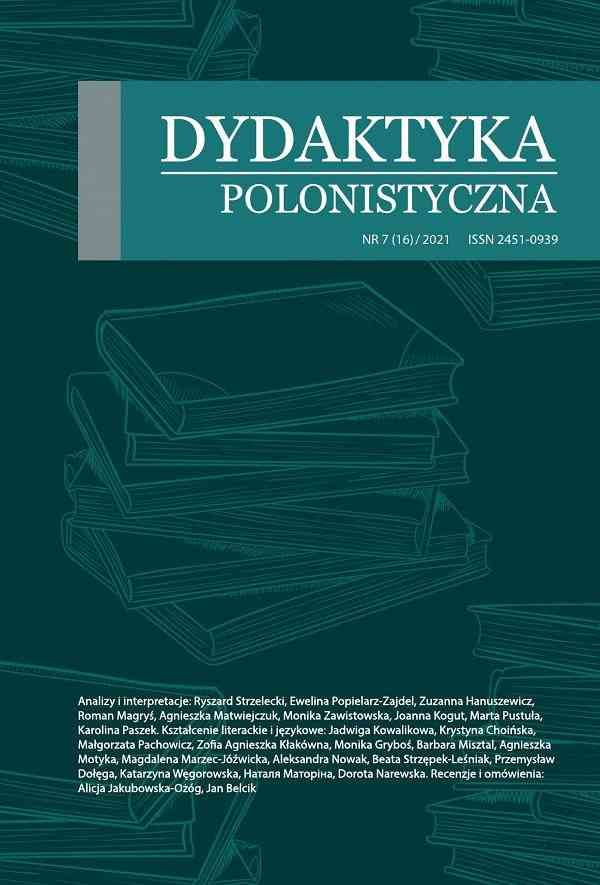The intimacy of contemporary ”mystical” journals. A confession, a challenge, or a message?
DOI:
https://doi.org/10.15584/dyd.pol.16.2021.7Keywords:
mysticism, intimacy, journal, confession, challenge, messageAbstract
Where does the most private space begin? This question raises a lot of controversy, not only in relation to sociological, psychological and cultural research, but also it touches on literary grounds. The category of intimacy has fluid boundaries, and subjectivity in the assessment of where the scope of its activity begins still raises numerous doubts among its researchers. It is in the depths of the human soul that we discover the most intimate space possible. Here is where the original meaning of the term should be sought.sought. Texts that want to capture this reality are increasingly declassified, and although the common opinion that truth is a relative value still resonates quite strongly in literary terms, texts such as ‘mystical’ journals, which still remain in the area on the border between literature and a document, may even become a challenge for some researchers. Therefore, the need for a closer look at nonfictional prose, and in particular at such a literary genre as the ‘mystical’ journal, is justified. However, it is not about mutual relations with traditional literary genres but about the internal diversity of this area and its own values. Interest in the ‘mystical’’mystical’ journal as a literary text is not only an expression of the intellectual curiosity of the author,curiosity of the author, but also a question about the author’s personality and,, above all, a desire to explore its message. However, from the point of view of literary studies, texts of this type certainly require in-depth analyses, and thus become a ‘challenge’ for their researchers.Downloads
Published
2021-12-15
How to Cite
Kogut, J. (2021). The intimacy of contemporary ”mystical” journals.
A confession, a challenge, or a message?. Dydaktyka Polonistyczna, 16(7), 85–101. https://doi.org/10.15584/dyd.pol.16.2021.7
Issue
Section
ANALYSES AND INTERPRETATIONS


